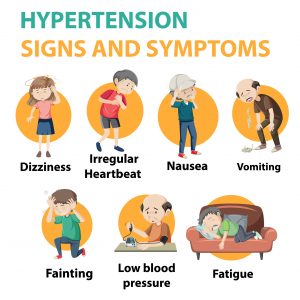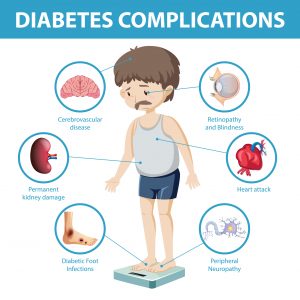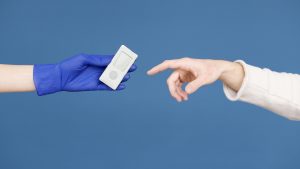Last updated on December 28, 2021
Content By: Dr. Nikita Toshi BDS, Assistant Manager (Medical Review)& Dr. Ritu Budania MBBS, MD (Pharmacology) Head, Medical Affairs
Last updated on December 28, 2021
Childhood is a time when there should be no boundaries. It is a time when you grow, learn, fall, get up and run again. But unfortunately, if a child is diagnosed with pediatric diabetes, at an age when they should be living worry-free, it can be a difficult journey for the parent and the child.
Diabetes is a condition when your blood sugar levels are higher than normal and pediatric diabetes is a form of diabetes in children which usually occurs in children below 5 years of age. Diabetes at this age can affect a child’s learning capabilities, it can cause difficulties with attention span, sometimes they may tend to forget things and get more tired than other kids their age. During this time the child needs utmost care and support from his family. At such a young age, they may not understand what diabetes is, how it is affecting their body or why they may not be allowed to have cake and ice cream just like their friends. Although doctors have not found a cure for type 1 diabetes in children yet, it can be carefully managed with the right medication and lifestyle alterations. In order to understand more about diabetes management in children, we first need to look at what pediatric diabetes is to help a child navigate through it better. So let’s dive right in.
Childhood is a time when there should be no boundaries. It is a time when you grow, learn, fall, get up and run again. But unfortunately, if a child is diagnosed with pediatric diabetes, at an age when they should be living worry-free, it can be a difficult journey for the parent and the child.
Diabetes is a condition when your blood sugar levels are higher than normal and pediatric diabetes is a form of diabetes in children which usually occurs in children below 5 years of age. Diabetes at this age can affect a child’s learning capabilities, it can cause difficulties with attention span, sometimes they may tend to forget things and get more tired than other kids their age. During this time the child needs utmost care and support from his family. At such a young age, they may not understand what diabetes is, how it is affecting their body or why they may not be allowed to have cake and ice cream just like their friends. Although doctors have not found a cure for type 1 diabetes in children yet, it can be carefully managed with the right medication and lifestyle alterations. In order to understand more about diabetes management in children, we first need to look at what pediatric diabetes is to help a child navigate through it better. So let’s dive right in.

Written by
BDS, Assistant Manager (Medical Review)

Reviewed by
MBBS, MD (Pharmacology) Head, Medical Affairs


Every parent around the globe has only one worry – Is their child eating enough? Are they getting enough nutrition? Are they eating too much sugar?
While these are natural concerns and new parents eventually learn how to offer different foods to their babies, some parents are given the challenge of raising a child with diabetes.
Pediatric Diabetes is another term for diabetes in children. Today, it is estimated that around 98,000 children have been diagnosed with Type 1 Diabetes Mellitus (formerly known as juvenile diabetes or pediatric diabetes).
For the normal functioning of the body, a hormone called insulin, produced by the pancreas is absolutely vital. When we eat, carbohydrates present in our food are broken down to glucose that is present in the blood. Insulin helps in the uptake of glucose by cells of our body where it is converted into energy. Type 1 Diabetes Mellitus is a condition when the body’s immune system starts destroying the insulin-producing cells of the pancreas. With very low or no insulin, the blood sugar levels in the body start to build up causing diabetes in kids as well as in a few adults. Type 1 diabetes was also called juvenile diabetes mellitus since it is more often diagnosed in babies or young children than adults. However, it is not uncommon for adults to get it too.

Types of Diabetes in Children
The most common types of diabetes are Type 1 and Type 2 diabetes. Both types of diabetes are likely to occur in children and adults too. But while type 1 diabetes is more common in children, type 2 diabetes is more common in adults.
The difference between the two types of diabetes is insulin production. People with type 1 diabetes do not produce any insulin while people with type 2 diabetes do not respond to insulin or don’t produce enough insulin.

Is your child diagnosed with diabetes?
Order diabetes medication online on PharmEasy and get it home delivered at your convenience.
As a parent, it can never be easy to suspect diabetes in your child. If your child has symptoms of type 1 diabetes, it is important to stay strong and offer the care and support that your child needs. Children with type 1 diabetes can, by all means, live normal and happy lives. As of now, unfortunately, there is no cure for this kind of diabetes. But sticking to doctor-prescribed treatment plans and medications coupled with a healthy diet and lifestyle right from the start has proven to minimise the effects of diabetes, so your child can go on to live normally, like any other.
The following are the main symptoms of type 1 diabetes to look out for in your child are:
![]() Increased thirst with dry mouth
Increased thirst with dry mouth
![]() Breath that smells sweet or fruity
Breath that smells sweet or fruity
![]() Frequent urination, possibly bed-wetting in a toilet-trained child
Frequent urination, possibly bed-wetting in a toilet-trained child
![]() Tiredness
Tiredness
![]() Heavy breathing
Heavy breathing
![]() Extreme hunger (even after eating a heavy meal)
Extreme hunger (even after eating a heavy meal)
![]() Blurry vision
Blurry vision
![]() Weight loss (even after excessive hunger and eating well)
Weight loss (even after excessive hunger and eating well)
![]() Moody and irritable behaviour.
Moody and irritable behaviour.
![]() Frequent skin and urinary tract infections or infections in the vagina for girls
Frequent skin and urinary tract infections or infections in the vagina for girls
What to do when a child experiences symptoms of juvenile diabetes?
If your child is experiencing the above juvenile diabetes symptoms, it is important to consult a physician at the earliest to get a diagnosis and start the medications right away. Diabetes in kids causes sudden and frequent fluctuations in blood sugars which can be difficult for young children to handle.
Has your child already been diagnosed with juvenile diabetes? In that case, look out for the following blood sugar fluctuations that indicate an emergency.
Symptoms of low blood sugar levels in children: (below 70 mg/dL)
Low blood sugar levels if left undetected can pose serious harm to the well-being of children and young adults.
Symptoms of Diabetic Ketoacidosis (High blood sugar levels leading to increase in ketones)

What are ketones?
When the body runs out of insulin and that will happen as the effects of diabetes take their toll – your child’s body will be unable to use glucose properly or effectively. Without glucose to fuel their body, it starts to use stored fat to get its energy.
When fat is broken down by the body, ketones are released. When too many ketones build up in the blood, this condition is known as diabetic ketoacidosis. A blood or urine test for ketones should be done immediately if any sign of ketoacidosis is visible and also in case of very high blood glucose levels.
Diabetic ketoacidosis is a serious condition and should never be taken lightly. If not managed on time it may have life-threatening consequences The patient should be taken to the hospital immediately for management of this condition.

Noticing symptoms of diabetes in your child?
Book a diabetes test to confirm or rule out the presence of the condition today!
The actual cause of pediatric diabetes is still unknown. Doctors and researchers believe that genetics and exposure to viruses play a certain role in their development. However, these are not the only juvenile diabetes causes.
Causes of type 1 diabetes in Indian children
There is no exact cause for type 1 diabetes in kids. It is an autoimmune condition where the body’s immune system misinterprets and destroys the insulin-producing cells of the body. While it can occur in any person, there is a higher risk of developing it:
If the child has an immediate family member who has type 1 diabetes (Eg. Mother, brother or sister).
Some viral infections could contribute to developing the condition.
The further away you live from the equator.
If your child has any other autoimmune disorder.
Causes of type 2 diabetes in children
While Type 2 diabetes generally is more common than type 1 diabetes, among the younger population, type 2 diabetes is less common and the main cause of type 2 diabetes found in children is also unknown. But doctors suggest it occurs mainly due to family history and genetics. Some of the main causes of this type of diabetes are as follows:
If the mother had gestational diabetes during pregnancy and the child was born overweight and/or prematurely.
If the child is overweight or obese (especially overweight around the belly).
If the child is extremely inactive.
If there is an immediate family member (mother, sister or brother) who has type 2 diabetes.
If the child has metabolic syndrome, i.e., a cluster of conditions that increase the chances of diabetes, high blood pressure and heart disease.

The main difference between the two types of diabetes is the functionality of the insulin-producing cells of the pancreas. Type 1 diabetes is an autoimmune condition where the immune system destroys these insulin-producing beta cells resulting in a lack of insulin. Type 2 diabetes is a condition where the insulin producing cells work properly but the body becomes resistant to the insulin produced by them.
Type 1 diabetes develops early and shows symptoms quickly. Particularly the reason why it is also called juvenile or pediatric diabetes, children with this condition are put on insulin therapy, a strict diet and a healthy lifestyle routine to avoid serious future complications.
Type 2 diabetes usually develops slowly and at a later age. Sometimes there are no symptoms as well. According to research, 25% of people with type 2 diabetes don’t even know they have the condition unless they have another medical complication.
However, both types of diabetes can lead to further ailments like heart disease, nerve damage, eye damage, hearing impairment, kidney abnormalities, skin conditions and even Alzheimer’s if not diagnosed early and treated at the right time.

Help your child manage diabetes with ease!
Explore PharmEasy’s range of glucometers to keep your child’s blood sugar levels always in check.
If left unattended or untreated, complications of type 1 and type 2 diabetes can lead to life-threatening conditions in young kids. As a parent, it may be difficult to associate the following complications with your child but it is absolutely vital to educate yourself about these complications and their signs, so you can give the best care and attention to your child and avoid these serious ailments.
Some of the complications of type 1 diabetes are:
High Levels of Ketones in the Blood
This complication of diabetes is also known as Diabetes Ketoacidosis and is a major risk in children as well as adults with low levels of insulin. In this condition, the absence or resistance of insulin causes the body to burn fat for energy (instead of breaking down glucose for energy). This results in the production of ketones in the blood. Accumulation of ketones in the blood leads to a serious condition called Diabetes Ketoacidosis. Its treatment requires immediate medical attention and if left untreated can lead to diabetic coma or in some cases, even death.
Diabetic Kidney Disease
When a person has high blood sugar levels, it starts to damage parts of the kidney, which are vital to filter your blood. Once damaged, the abnormal kidney filter becomes leaky and leaks out protein in the urine. High levels of albumin in the urine is an indicator of diabetic kidney disease, also known as diabetic nephropathy. About 25% of diabetic patients can get nephropathy if not treated properly.
Nerve damage
Another complication of type 1 diabetes is nerve damage that results in numbness, pain or weakness in the affected area. This condition is also called diabetic neuropathy. High levels of glucose can damage nerves throughout your body by affecting the blood vessels supplying to that region, predominantly legs and arms. Diabetic Neuropathy is considered serious because the body cannot repair damaged nerve tissues, which means the damage is lifelong. It further leads to conditions like diabetic foot where an infection or wound goes unnoticed due to poor sensations of feet and keeps on worsening. Nerve damage can lead to poor muscle tone which can over a period of time impact the joints especially the ankle joint.
Eye diseases (Cataract and Diabetic Retinopathy)
Uncontrolled diabetes can lead to several eye diseases including glaucoma and a diabetic eye condition called retinopathy. Diabetic retinopathy occurs when the blood vessels at the back of the eye (retina) get damaged due to high blood sugar or high blood pressure. When damaged, the abnormal blood vessels leak and cause black spots in our vision. Diabetic Retinopathy can lead to difficulty recognizing colours and even blindness if left untreated. Diabetic retinopathy treatment can prevent, delay or reduce vision loss. However, you can definitely avoid it from getting worse or reduce the risk of developing it altogether by keeping your blood sugar and blood pressure levels under control.
Another eye disease that can be seen in diabetic patients is cataract which results due to clouding of the lens of your eyes leading to the blurring of vision.
High blood sugar
High blood sugar often affects adults and children with diabetes. Unhealthy foods and lifestyle choices with inactivity contribute to consistently high blood sugar levels. If left unattended, very high blood sugar for a long duration can lead to diabetic coma.
Low blood sugar
Extremely low blood sugar levels (below 70 mg/dL) in children can cause seizures, unconsciousness and even coma in rare cases. Doctors usually suggest eating or drinking high sugar foods like half a cup of fruit juice or 2 – 3 tablets of glucose and/or medications to bring up the blood sugar levels within the normal range.
Heart disease
With time, damages to the blood vessels and nerves due to high blood sugar may also lead to several heart disorders. When diabetes is not controlled, it can lead to nerve damage and kidney disease which then increases the risk of heart problems in the future.

Therefore, it is undoubtedly paramount to ensure that your child takes timely medication, sticks to a healthy diet and lifestyle and also practices some exercise for diabetes in their everyday life. Diabetes can lead to some difficult conditions but it can be controlled, managed and avoided to help your child lead a normal life like any other child.
If your child has symptoms of any of the above complications of type 1 diabetes, is it recommended to consult your physician at the earliest to start the appropriate treatment as soon as possible.

Prevent diabetes complications in your child.
Explore diabetic care products on PharmEasy to help manage diabetes with ease.
Is your child experiencing any of the above-mentioned symptoms? If yes, the natural tendency can be to panic and stress. Instead don’t worry. The best thing to do in this situation is to consult a doctor or a trusted paediatrician or a paediatric endocrinologist at the earliest so that they can run physical tests and examinations to confirm the condition and start the treatment.

The following are the main diagnostic procedures used for testing for diabetes in children:
This test is conducted after your child fasts overnight and will be done on an empty stomach. A fasting glucose level of over 126 milligrams per deciliter, shall be regarded as diabetes.
Post-Prandial Blood Sugar Test
Blood sugar is tested 2 hours after the patient has taken one full meal. This test helps to give an idea of the peak rise in blood sugar level that may happen after consuming food. It also depends on the type and quantity of meal the patient has consumed on the day of the test hence, it may also give an inappropriate result as most patients tend to consume an unusually low carb diet on the day of the test. Results of both the Fasting blood sugar test and Post prandial Blood Sugar test are considered for interpretation.
Oral Glucose Tolerance Test
In this test, your child will be asked to fast overnight and the fasting blood sugar is recorded. Then After that, he/she will be asked to drink a sweet liquid, after which your blood sugar is tested in regular intervals over the next two hours. If the levels are lower than 140 mg/dL, readings are normal. A reading higher than 200 mg/dL at the end of two hours meets the diabetes diagnosis range.
This is a blood test taken at any time of the day. A simple blood sample will be taken where a blood sugar level of over 200 milligrams per deciliter, will be considered as diabetes. The normal range of glucose levels in children would be between 80 – 200 mg/dl. This type of test is the primary screening method for type 1 diabetes.
This test is the second screening test for diabetes. Also called an A1c test, it measures the average glucose levels in your child’s blood over the last three months or 90 days. The normal range of an A1c test is between 5 – 6.5. A test result that is higher than 6.5 can indicate diabetes.
Additional tests to determine pediatric diabetes include blood tests to check for antibodies that are commonly produced when a person has type 1 diabetes and urine tests to check the presence of ketones in the child’s blood.

Think your child may have diabetes?
Book a diabetes diagnostic test on PharmEasy to find out!
Treatment of diabetes in children requires medical attention without a doubt. While this is overwhelming for a parent, it is important to understand that your child requires love and lots of support in order to manage the condition. Simple lifestyle changes do play an important role but it is not the only management option for both types of diabetes. While diabetes treatment requires doctor’s intervention here are some options that your health professional may suggest to help you manage type 1 or type 2 diabetes in your child.
Managing Type 1 Diabetes in Your Child
Some of the ways you can help your child manage type 1 diabetes include:
In short, the primary type 1 diabetes treatment is usually lifelong insulin therapy.
Insulin Therapy
Children diagnosed with type 1 diabetes must take insulin as part of their juvenile diabetes treatment. Since their bodies do not make sufficient insulin, it is absolutely vital to take insulin to make sure the blood sugar levels are under control and the body functions properly overall. Currently, the only way to put insulin into the body is through injections or an insulin pump.

There are five types of insulin preparations available which are as follows:
Rapid-acting – This insulin type shows effect within 15 minutes of taking it and is given to the child before a meal. Its effect lasts for 2 to 5 hours.
Short or regular acting – It is given 30 minutes to an hour before a meal. Compared to rapid-acting insulin, the effects of short-acting insulin are usually longer, tends to be working about 30 to 60 minutes after it’s been injected. You can expect this form to last between 5 and 8 hours and should be taken before your meal.
Intermediate-acting – The effects of this type of insulin lasts 10 – 16 hours and is usually given twice a day. Intermediate-acting insulin imitates basal secretion that is always in the blood of a (non-diabetic) person. In the absence of natural insulin, this type of insulin replicates it.
Long-acting – Long-acting insulin is very similar to intermediate-acting insulin and also imitates basal secretion. The only difference is while the effects of fasting insulin last 10 – 16 hours, long-acting insulin lasts 20 – 24 hours. It is generally given once a day but it is not uncommon to be given twice when the blood sugar levels are high.
Pre-mixed – Pre-mixed insulin is a combination of two types of insulin to ensure both bolus and basal secretion are within the normal range. For example – rapid-acting insulin is premixed with intermediate-acting insulin.
It is important to consult a doctor to discuss type 1 diabetes treatment options for your child before thinking of self-treating in any way. Your health practitioner is the best person to provide you with the right advice on how you can look after your child who is diabetic.
Managing Type 2 Diabetes in Your Child
Treatment for type 2 diabetes is initiated with oral glucose-lowering medications, which in some cases may also include insulin which will be prescribed by a doctor depending on your child’s case. It is important for your child to eat according to a proper meal plan and engage in regular physical activity and exercise to maintain a healthy weight. Some experts say that a well-balanced diet for a diabetic child includes one portion of iron and proteins, one portion of fruits and vegetables and one small portion of carbohydrates. However, is it best to consult a nutritionist or a dietitian who will be able to prescribe a diet and exercise program more suited to your child’s lifestyle and needs.
It is also extremely important to stick to medications and a healthy lifestyle right from the early years of the child. We have said it before, we will say it again, with timely medication and monitoring, well-balanced meal plans, a healthy lifestyle routine and consistent physical therapy, your child can and will lead a happy and normal life, like any other child.

Supplement your child’s treatment with the right medicines.
Order prescription medicines online on PharmEasy and get it home delivered at your convenience.
One of the biggest questions in a parent’s mind is – “Is type 1 diabetes curable and preventable?”
The simple answer to that is “no”. Although that may sound grim, type 1 diabetes in children can be effectively managed without compromising the standard of the child’s life. If the parent of the child has been diagnosed with diabetes in the past or if the mother had gestational diabetes during her pregnancy, the chances of the child getting type 1 or type 2 diabetes increase. But, parents can take the following preventive measures to make sure that the child’s blood sugar levels are always under control in order to reduce the risks of the condition.
Preventing Type 1 diabetes in children
Medically, there is no way to prevent type 1 diabetes. However, doctors and researchers are now able to detect antibodies months or in some cases even years, before the person starts to show the first signs of pediatric diabetes. So in this sense, it may be easy to start juvenile diabetes treatment before the first signs of type 1 diabetes show up. But while this may be a preventive measure, it is also important to understand that not every child with these antibodies goes on to develop the condition.
As a parent, you can prevent the complications of type 1 diabetes in your children from getting severe by:
![]() Monitoring their blood sugar levels regularly.
Monitoring their blood sugar levels regularly.
![]() Teaching your child to control his or her blood sugar levels and educating them about the condition appropriately.
Teaching your child to control his or her blood sugar levels and educating them about the condition appropriately.
![]() Ensuring that they eat well-balanced and nutritious foods while teaching them the importance of the same with their condition
Ensuring that they eat well-balanced and nutritious foods while teaching them the importance of the same with their condition
![]() Encouraging them to participate in physical activity regularly.
Encouraging them to participate in physical activity regularly.
![]() Keeping close tabs on their appointments with their pediatric doctors including yearly eye checkups and full-body health check-ups after their diabetes diagnosis.
Keeping close tabs on their appointments with their pediatric doctors including yearly eye checkups and full-body health check-ups after their diabetes diagnosis.

Preventing Type 2 diabetes in children
There is no assured way to prevent diabetes type 2 in children, however, it is possible to act on some of the controllable risk factors like sedentary lifestyle and obesity. Another risk factor is genetic and mothers who already have diabetes should be more prepared to take the necessary steps required to prevent it from occurring for their children. Type 2 diabetes usually only requires diet and lifestyle changes along with medications. To do so you and your family can follow the below preventive measures:
![]() Get into the habit of including some sort of activity - be it walks, playing cricket or throwball, playing in the park, etc. Make it a habit to spend at least 30 minutes outside, as a family.
Get into the habit of including some sort of activity - be it walks, playing cricket or throwball, playing in the park, etc. Make it a habit to spend at least 30 minutes outside, as a family.
![]() Reduce screen time for children and have them engaged in some fun home activity.
Reduce screen time for children and have them engaged in some fun home activity.
![]() Offer healthy foods and reduce unhealthy sugars and processed foods.
Offer healthy foods and reduce unhealthy sugars and processed foods.
![]() Manage the weight of overweight children.
Manage the weight of overweight children.
![]() Schedule an appointment with a trusted dietician, who can assist you and your family in eating healthy and exercising.
Schedule an appointment with a trusted dietician, who can assist you and your family in eating healthy and exercising.
If your child is at risk of developing the condition, it is strongly advised to take up the above juvenile diabetes prevention methods right from the birth of the child.

Help lower the risk of diabetes in your child.
Order from a range of diabetic care products on PharmEasy to help keep blood sugar levels always under control.
How do I know if my child has Juvenile diabetes?
To know if your child has type 1 diabetes check for the following symptoms:
If you see the above-mentioned symptoms in your child, kindly consult your doctor immediately to avoid serious complications.
Can you reverse type 1 diabetes?
Type 1 diabetes is believed to be irreversible. There is no cure but managing the condition by insulins and controlling blood sugar levels can keep complications related to diabetes at bay. However, thanks to recent medical advances, researchers with the Diabetes Research Institute have been working on juvenile diabetes treatment that can reverse the condition so there may be scope for type 1 diabetic patients to live a life without medication.
At what age does juvenile diabetes occur?
Juvenile diabetes can occur in an infant, a toddler or even as a teen. But generally, it occurs between the ages of 4 – 7.
What causes Juvenile diabetes?
Juvenile diabetes is caused due to the autoimmune destruction of insulin-producing cells of the pancreas. This leads to a lack of insulin in the body which in turn causes a build-up of glucose levels in the blood. Some experts suggest that it is a genetic disorder and can also occur in someone whose immediate family members have been affected by it.
Is juvenile diabetes serious?
If left unattended or untreated, juvenile diabetes causes life-threatening conditions. High blood sugars damage vital parts of the body including the kidney, eyes, nerves and heart. Low levels of insulin may cause the breakdown of fat to produce energy instead of glucose. This leads to the accumulation of ketones in blood which can further progress to a life-threatening condition called diabetic ketoacidosis. However, with immediate medical care, proper medication and treatment, it can be controlled and managed.
How is juvenile diabetes treated?
Type 1 Diabetes in children as well as adults is primarily treated by taking insulin through injections or an insulin pump. Along with insulin and other medications, a healthy diet, exercise and good lifestyle choices will eliminate or reduce the risks of complications arising from juvenile diabetes.
Can my child conceive naturally in the future as she has diabetes?
Diabetes does not affect fertility. However, your child may have a risk of certain complications during pregnancy i.e., overweight baby, premature labour, etc in case of uncontrolled blood glucose levels. Kindly consult your doctor for more information on how your child can have a relaxed pregnancy term.
I make my child eat healthy food, still, he/she got Type 1 DM?
The exact cause of type 1 diabetes is unknown. However, genetics and family history play a role in its development. It may affect a child despite a healthy diet and lifestyle.
Is type 1 diabetes curable?
There is no cure for type 1 diabetes as of yet. The condition can, however, be managed and controlled through a doctor-recommended treatment plan that includes timely medications, insulin therapy, healthy diets and a healthy lifestyle.


Leave a Comment